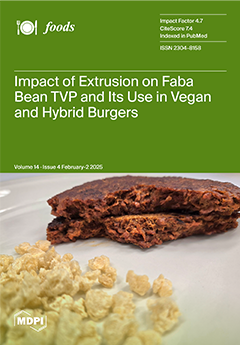In recent years, the bioactive compounds extracted from
Sanghuangporus, especially polysaccharides, phenols, and triterpenoids, have attracted great interest from people due to their extensive biological activity. Among them, polysaccharides are mainly extracted from the seed bodies, mycelium, and fermentation broth of
Sanghuangyuan
[...] Read more.
In recent years, the bioactive compounds extracted from
Sanghuangporus, especially polysaccharides, phenols, and triterpenoids, have attracted great interest from people due to their extensive biological activity. Among them, polysaccharides are mainly extracted from the seed bodies, mycelium, and fermentation broth of
Sanghuangyuan, exhibiting notable effects including immunomodulation, antitumor properties, and hypoglycemic effects. This article provides a comprehensive review of the extraction process, structural characteristics, and antitumor mechanism of
Sanghuangyuan polysaccharides. First, the different extraction methods, such as hot water extraction, enzyme-assisted extraction, and ultrasonic-assisted extraction, are summarized. Then, the structure of the
Sanghuangporus polysaccharide is studied in detail. Moreover, the antitumor mechanisms demonstrate significant inhibitory impacts on various malignant tumors, spanning gastric, hepatic, colorectal, breast, and prostate cancers. This groundbreaking revelation is of great significance for both the food and pharmaceutical sectors, presenting innovative pathways for
Sanghuangyuan utilization and potentially inducing advancements in product development, treatment modalities, and therapeutic interventions.
Full article






